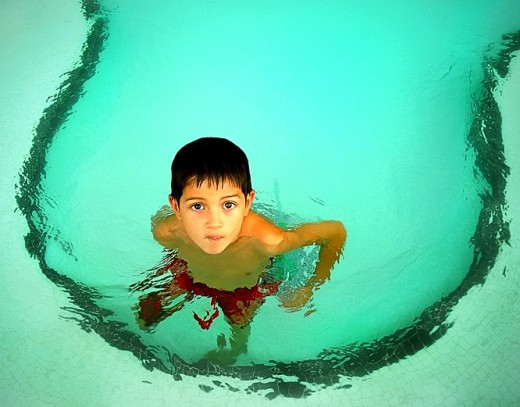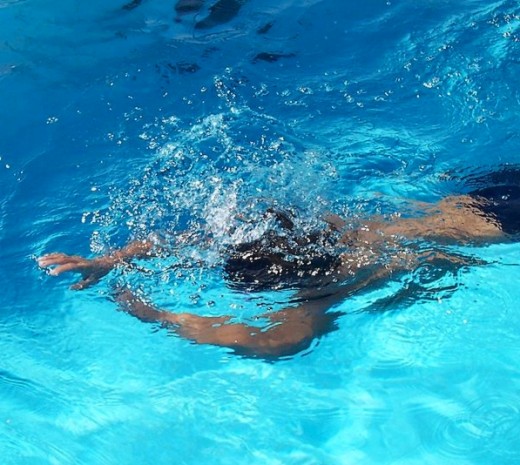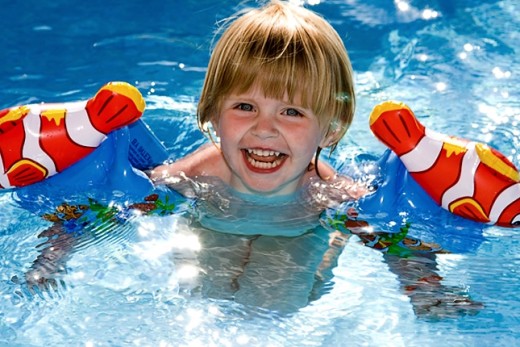Bathing After Eating, Swimming Immediately After a Meal - Dangerous Activities?
This is one of those mantras that parents picked up somewhere and applied them feverishly without really knowing whether they were true or not. The origin of the advice not to return to the water for an hour after eating is lost. But the idea was that eating could cause stomach cramps and drowning.
How many trips to the beach have been ruined or curtailed unnecessarily because of this? It turns out that there is no evidence that this warning is true ir valid.
BUT overeating and drinking too much before swimming can still be risky, not because of stomach cramps but for other reasons. This applies not just for alcoholic beverages, but other beverages as well.
This article discusses the evidence and provides a guide to what and when you can eat and drink, before swimming and bathing.




How Could Swimming after a Meal Cause Stomach Cramps?
One possible reason is that the process of digesting food may draw blood away from other parts of the body causing muscles in the torso not to function properly. The digestive system needs to divert blood from around the body to help with the digestive process. Could this starve the other organs of blood? However, the risks of this happening are very small.
It is true that doing very strenuous exercise on a full stomach can be uncomfortable and can cause vomiting, with an increased risk of choking. But these risks are also small. The limited research that has been done on this topic showed that less than 1% of the victims of drowning had eaten a meal just before drowning.
Professional endurance swimmers take care not to race on a very full stomach, but they do eat a little before are race to provide the energy they need in a readily digested form.
Likewise many endurance swimmers on very long races often consume food during the race without leaving the water. This occurs without any harm. Very few get stomach cramps, though they may get leg cramps for other reasons. These leg cramps are caused by overexertion, not by eating food.
Are Side Stitches Caused by Eating before Exercise?
Although side stitches, can feel like a cramp, they are quite different. Stitches, though poorly understood, do not occur because of overexertion of the major muscle groups. They may feel like a cramp, but they are not. While elite swimmers are slightly more likely to get side-stitches than runners, it is rarely linked with eating before swimming in any way.
However, it is true that any stitches that occur when swimming may be risky, particularly for inexperienced swimmers and children.
Drinking too Much Before Swimming Can Be Risky
Research studies have shown that many drowning of adolescents are related to alcohol consumption. Statistics from one study showed that about 25% adolescents that drowned are intoxicated. Another study showed that about 40% of deaths from drowning were alcohol related. An Australian study has shown that alcohol appeared to contribute to about 20% of fatal drownings (about 15% for incidental falls into water and 25% for recreational aquatic activity).
There is evidence that overconsumption of water and other fluids leading to bloating can trigger stitches and other cramp-like symptoms in runners and other athletes.
Researchers noticed that many runners got stitches soon after visiting a drinks station to rehydrate. Studies have shown that runners who drank reconstituted fruit juice to rehydrate were more likely to get a stitch and to have decreased performance due to a feeling of being bloated.
It has been suggested that the juice, or excess fluid consumed to ‘load up the athlete with fluid may put pressure on the peritoneum that forms the outer layer of the abdominal wall. This pressure may irritate or strain the body wall, triggering a stitch.
In principle eating very large amounts of food and becoming bloated with food or fluid could do the same. This does not apply to normal size meals.
Drinking too much fluid during marathon events is known to have caused the death of a small number of athletes.
This so-called “Water intoxication” is due to the induced imbalance of electrolytes caused by drinking too much water. This can trigger brain misfunction and occasional deaths.
Factors Contributing to Child Deaths by Drowning
Studies in Australia have shown that lack of parental supervision was a major contributor to drowning of children, being as high as 70% of cases. Although there are no statistics, meal times may indirectly imposed greater risks, because parents may be more distracted eating, preparing or cleaning up after meals. This may be an indirect factor linking drowning risks with meal times.
Should Swimmers Still Wait an Hour before Returning to the Water after Eating or Drinking?
Like most things the answer lies in common sense and moderation.
Heavy exercise, or even vigorous play, on a full stomach, may trigger a bout of vomiting, which can be disorientating in the water and may trigger breathing problems or gulping for air, which may be risky.
The sensible approach is not to overeat or consume vast quantities of water or other drinks before swimming and to wait for half an hour or so after large sonsumptions.
Parents should be aware that the distractions at meal times may pose extra risks of inadeqaute supervision of children swimming.